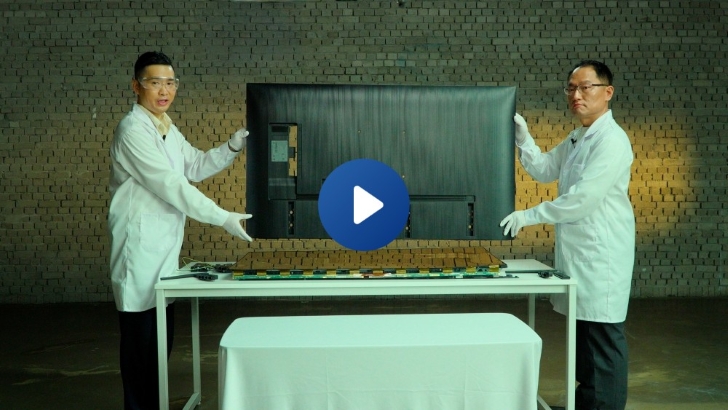Samsung Electronics has been leading display innovation for years — most notably by pioneering the world’s first commercialization of cadmium-free quantum dot materials. This groundbreaking technology has since become the cornerstone of achieving precise color reproduction and exceptional picture quality. Touted as the next-generation material, it has also drawn attention not just in the TV industry, but also in other sectors like medical devices and solar cells.
With the introduction of QLED TVs, Samsung has redefined the television landscape, integrating this innovative quantum dot technology into its products. By leveraging the properties of these ultra-fine quantum dots, QLED displays achieve a broader color gamut and higher brightness, elevating picture quality to levels that traditional LED TVs cannot match.
What sets Samsung QLED TVs apart from conventional LED TVs? Samsung Newsroom had the opportunity to meet with researchers Kevin Cha and Jang Nae-won from the Visual Display Business and disassemble a Samsung QLED TV to reveal the secrets behind its stunning performance — literally behind the screen.
1. Operating Module: The Brain of TV
1) Rear Cover
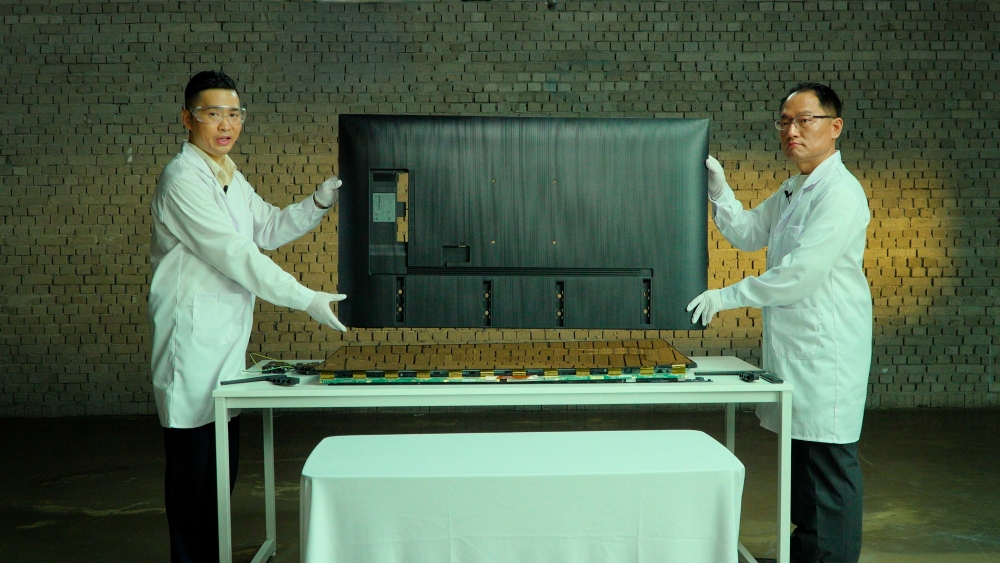
The back panel of a TV serves more than just a structural frame; it protects internal components and effectively manages heat. It houses speakers for audio support and facilitates easy device connections, improving the overall user experience.
2) Main PCB (Printed Circuit Board)
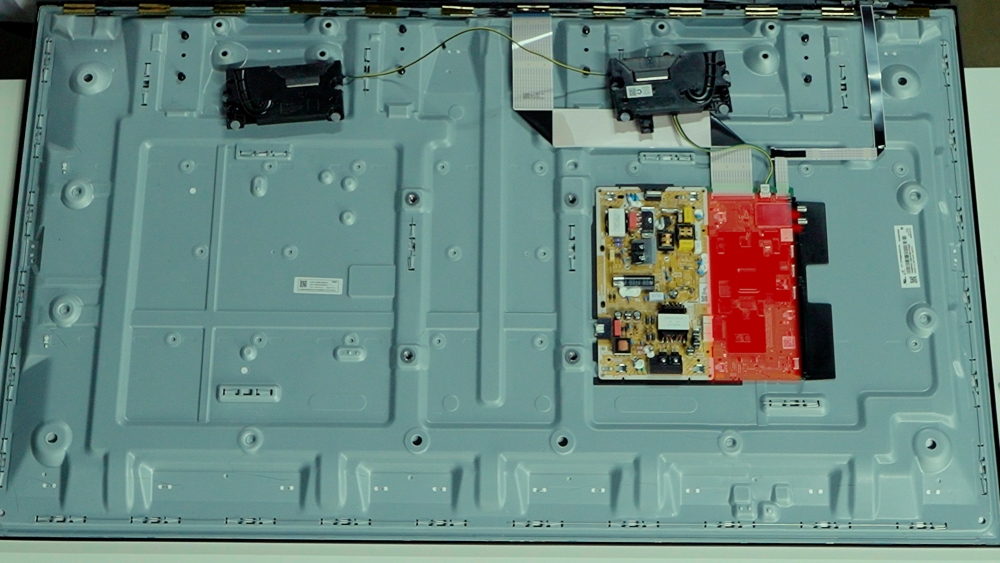
The main PCB acts as the brain of the TV, overseeing functions such as power supply, remote control reception and SmartThings connectivity. This critical component controls the entire system, ensuring the television operates smoothly.
3) TV Tuner
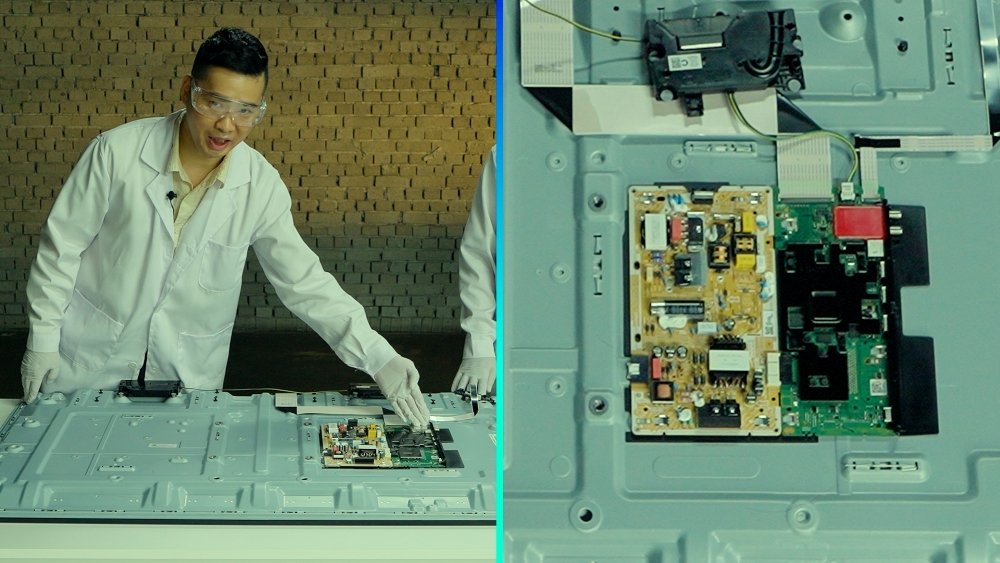
The TV tuner is responsible for receiving and converting broadcast signals for display on the screen. The rise of streaming services and increased use of external device connections has led many users to prefer smart monitors without tuners. However, by definition, a “television” must include this component.
4) AI Processor
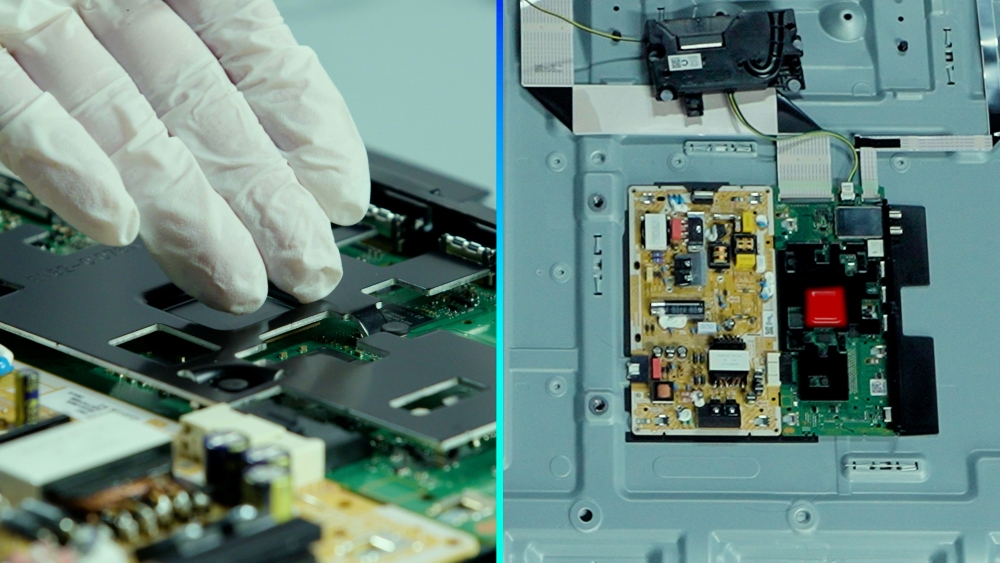
At the heart of the Samsung QLED TV is the Q4 AI Processor chip. This advanced component manages AI functionalities such as picture and audio optimization and AI assistants. By automatically adjusting both image and sound based on the surrounding environment, the AI processor makes the viewing experience more immersive.
5) Speakers

Speakers are more than simple output devices. With high-resolution audio and a room-filling sense of space, Samsung QLED TV speakers greatly enhance the viewing experience.
2. Panel
1) Liquid Crystal Display (LCD) Layer and Color Filter

The panel’s structure comprises several intriguing components. The liquid crystal layer and color filter are essential parts of the panel’s basic structure. The liquid crystal layer controls light passage, while the color filter separates colors and creates images at a pixel level. The PCB, which is attached to the panel, precisely controls each pixel, fine-tuning the image.
2) Optical Sheet
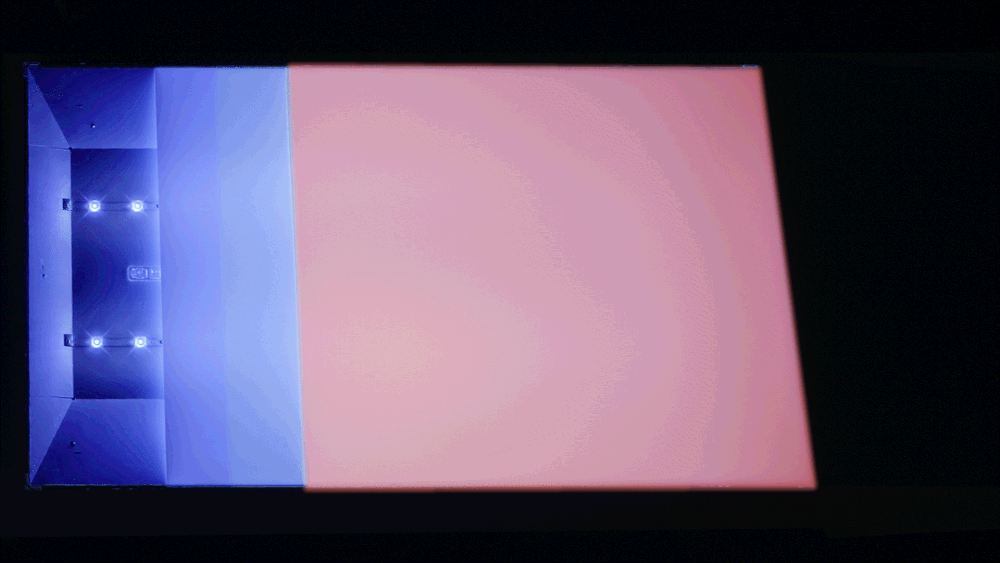
The optical sheet concentrates light from the backlight, ensuring a brighter and more uniform image across the display. By gathering light, it elevates the general brightness of the display.
3) QD (Quantum Dot) Layer
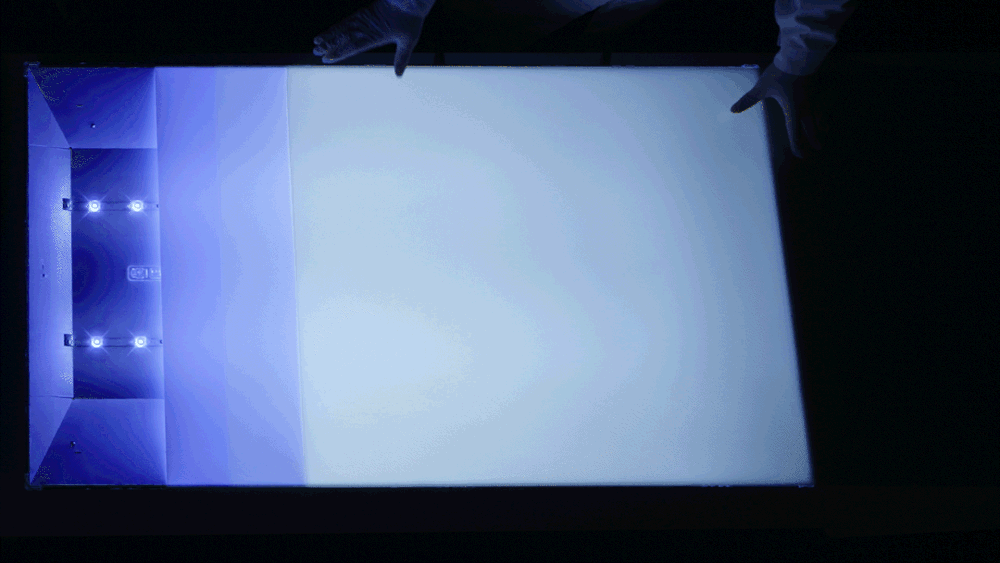
The next step reveals the QD layer, perhaps the most important, core component of Samsung QLED TVs. The layer actually utilizes quantum dot materials to convert light sources. This ensures more precise and vibrant colors than conventional technologies, resulting in lifelike visuals. The QD materials in this layer are certified No-Cadmium, enabling safer quantum dot TVs that do not contain harmful substances.
4) Diffuser Plate
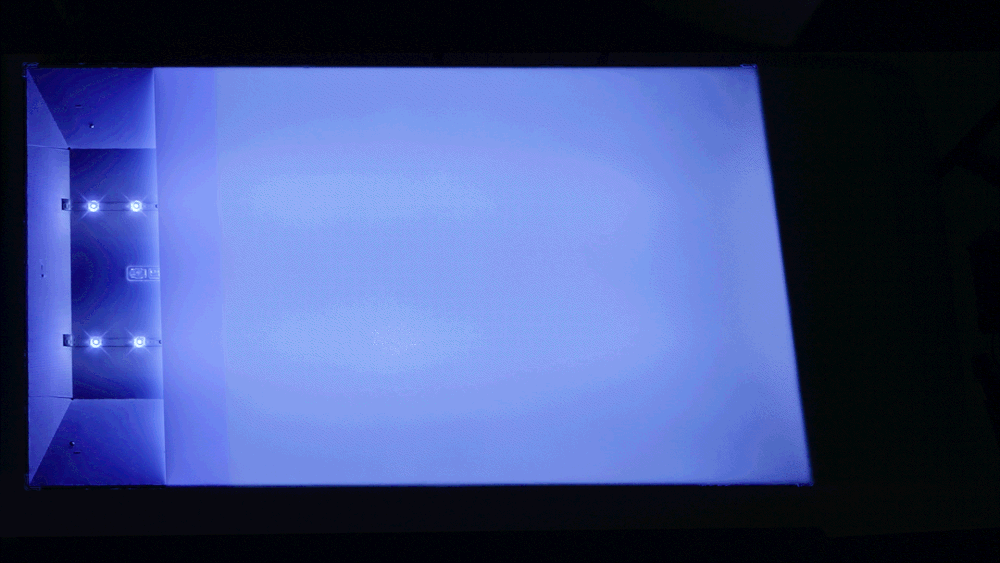
This diffuser plate scatters light emitted from the backlight and spread it evenly across the panel to eliminate excessively bright spots and maintain natural illumination.
5) Blue LED Backlight

Samsung QLED TVs use a bright and efficient blue LED backlight. When paired with the QD layer, this backlight produces highly pure colors and achieves greater light efficiency than traditional white LEDs in standard LCD TVs, leading to enhanced overall luminance.
3. Three Key Requirements for a Real Quantum Dot TV
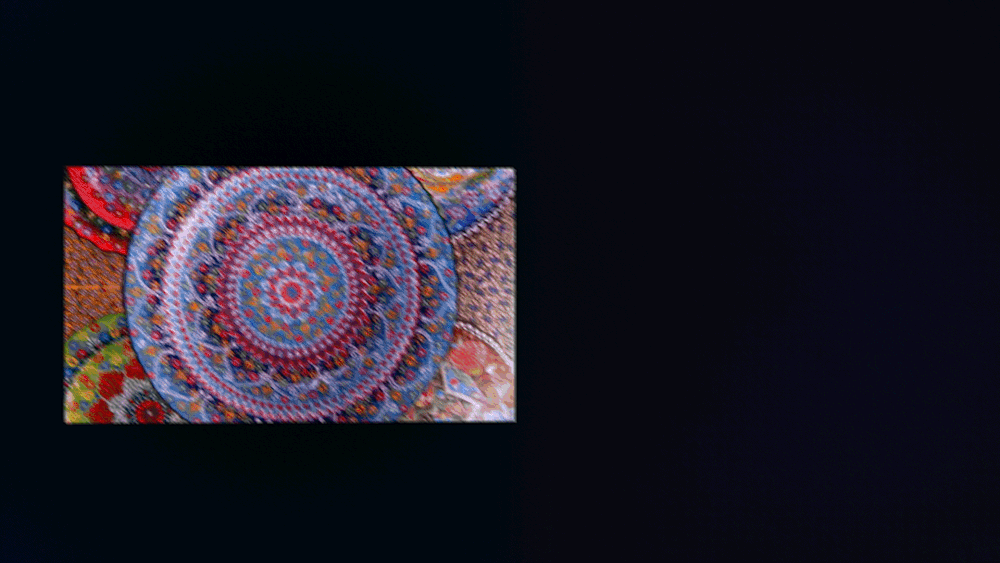
To qualify as a real quantum dot TV, three conditions must be met: the presence of a QD layer, sufficient quantum dot concentration and a blue backlight. Once a TV meets all three conditions, it can be considered a real quantum dot TV.
Samsung QLED TVs are the only models in the world to satisfy these criteria, earning the ‘Real Quantum Dot Display’ certification from TÜV Rheinland, a prominent international certification body based in Germany. This recognition underscores the excellence of Samsung’s QLED technology.
4. Striking Difference Between QLED and LCD

The differences between Samsung QLED and traditional LCD TVs are evident even to the naked eye, but especially striking when measured with professional tools.
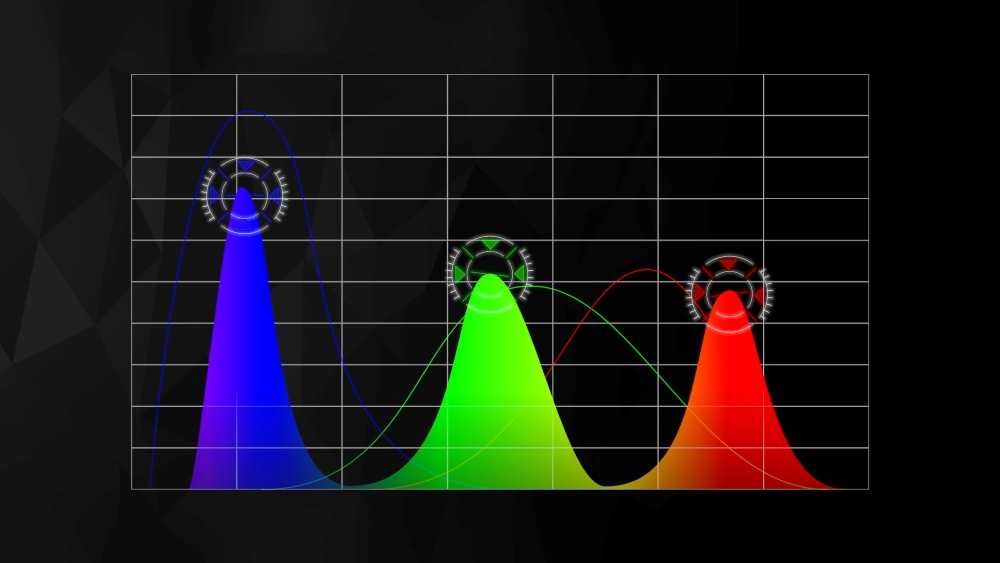
For Samsung QLED TVs, the wavelengths of red, green and blue colors exhibit narrow bandwidths and distinct peaks in their emission spectrum, resulting in meticulous color representation. Viewers can see natural visuals and exceptional picture quality with rich, deep colors.
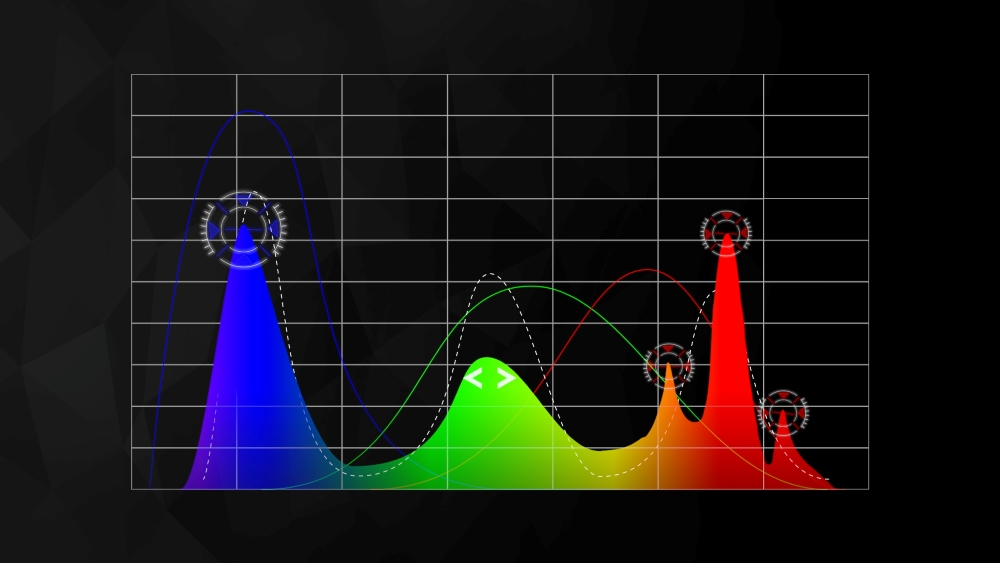
In contrast, LCD TVs without QD layers display generally lower peaks, a wider bandwidth in green as well as multiple peaks in red, hindering accurate color reproduction. To compensate, these TVs often require multiple layers for color correction, ultimately reducing light efficiency.
The in-depth teardown reveals that Samsung QLED TVs are built with sophisticated technology that goes beyond basic explanations. Every component that manages light works in harmony, culminating in breathtaking image quality. The QD layer, in particular, significantly enhances the richness and vibrancy of colors. The intricate technology behind these displays makes a substantial difference in overall picture quality.
At IFA 2025, Samsung Electronics showcased its technological prowess by establishing a “Real QLED Zone,” promoting the concept of “Buy Real, Not Fake.” Samsung QLED TVs represent the pinnacle of cutting-edge technology, pushing the boundaries of premium viewing experiences. With Samsung’s QLED TVs, viewers can truly appreciate the remarkable difference that quantum dot technology delivers.
